(English version)
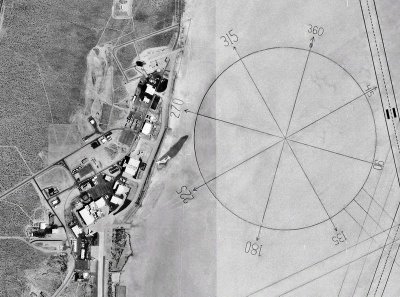 The Dryden Flight Research Center, NASA's premier installation for aeronautical flight research, is the "Center of Excellence" for atmospheric flight operations. The Center's charter is to research, develop, verify and transfer advanced aeronautics, space and related technologies. It is located at Edwards, California, on the western edge of the Mojave Desert, 80 miles north of Los Angeles.
The Dryden Flight Research Center, NASA's premier installation for aeronautical flight research, is the "Center of Excellence" for atmospheric flight operations. The Center's charter is to research, develop, verify and transfer advanced aeronautics, space and related technologies. It is located at Edwards, California, on the western edge of the Mojave Desert, 80 miles north of Los Angeles. The world's largest compass rose is painted on the playa beside NASA's Dryden Flight Research Center. As you can see clicking on the right image, the Google Earth view is simply amazing.
The world's largest compass rose is painted on the playa beside NASA's Dryden Flight Research Center. As you can see clicking on the right image, the Google Earth view is simply amazing.
Until 2004, Dryden operated the oldest B-52 Stratofortress bomber, a B-52A model which had been converted to drop test aircraft. It dropped a large number of supersonic test vehicles. These are some of the Dryden's most remarkable facts:
(Click on the images to see de videos)
1. Approach and Landing Test On August 12, 1977, the first free flight by the prototype space shuttle orbiter Enterprise was successfully flown at NASA's Dryden Center. This was one of five glide flights conducted at Dryden as part of the space shuttle Approach and Landing Test (ALT) program.
On August 12, 1977, the first free flight by the prototype space shuttle orbiter Enterprise was successfully flown at NASA's Dryden Center. This was one of five glide flights conducted at Dryden as part of the space shuttle Approach and Landing Test (ALT) program. The ALT glide flights accomplished a number of goals. First, they allowed pilots and engineers to learn how the Space Shuttle handled during low-speed flight and landing, providing realistic, in-flight simulations of how subsequent Space Shuttles would be flown at the end of an orbital mission.
The ALT glide flights accomplished a number of goals. First, they allowed pilots and engineers to learn how the Space Shuttle handled during low-speed flight and landing, providing realistic, in-flight simulations of how subsequent Space Shuttles would be flown at the end of an orbital mission.
2. X-38 Crew Return Vehicle (CRV) The X-38 Crew Return Vehicle(CRV) was a prototype for a wingless lifting body reentry vehicle that was to be used as a crew return vehicle for the International Space Station (ISS). The X-38 was developed to the point of a drop test vehicle. Its development was cancelled in 2002.
The X-38 Crew Return Vehicle(CRV) was a prototype for a wingless lifting body reentry vehicle that was to be used as a crew return vehicle for the International Space Station (ISS). The X-38 was developed to the point of a drop test vehicle. Its development was cancelled in 2002.
In the following video, the X-38 research vehicle drops away from NASA's B-52 mothership immediately after being released from the wing pylon: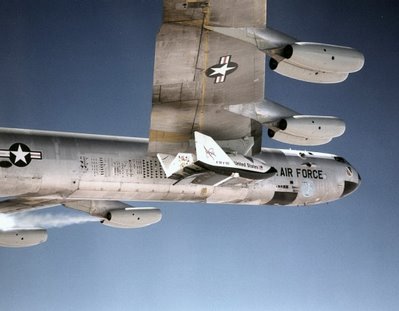
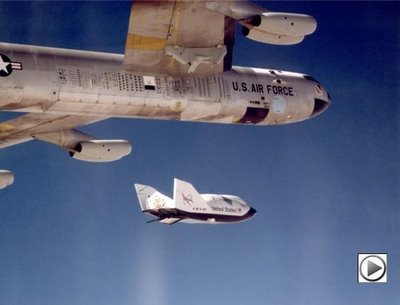
3. X-15 rocket plane.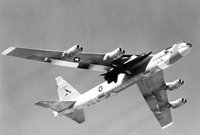 The North American X-15 rocket plane was perhaps the most important of the NASA X-series of experimental aircraft. The X-15 set numerous speed and altitude records in the early 1960s, reaching the edge of space and bringing back valuable data that was used in the design of later aircraft and spacecraft. It should be considered the first manned suborbital spacecraft ever constructed by the US. As with many of the X-aircraft, the X-15 was designed to be carried aloft under the wing of a B-52:
The North American X-15 rocket plane was perhaps the most important of the NASA X-series of experimental aircraft. The X-15 set numerous speed and altitude records in the early 1960s, reaching the edge of space and bringing back valuable data that was used in the design of later aircraft and spacecraft. It should be considered the first manned suborbital spacecraft ever constructed by the US. As with many of the X-aircraft, the X-15 was designed to be carried aloft under the wing of a B-52: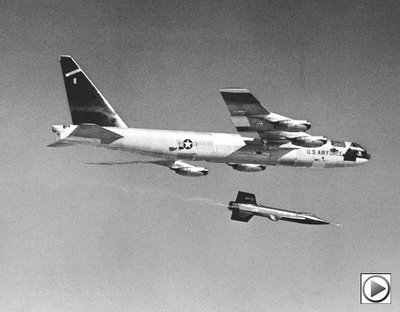 Twelve test pilots flew the plane, including Neil Armstrong, later the first man on the Moon and Joe Engle who went on to command Space Shuttle missions.
Twelve test pilots flew the plane, including Neil Armstrong, later the first man on the Moon and Joe Engle who went on to command Space Shuttle missions.
4. Controlled Impact Demonstration  The Controlled Impact Demonstration (or more colloquially the Crash In the Desert) was a joint project between NASA's Dryden Flight Research Center and the Federal Aviation Administration (FAA) to test the impact of a Boeing 720 aircraft using standard fuel with an additive designed to suppress fire.
The Controlled Impact Demonstration (or more colloquially the Crash In the Desert) was a joint project between NASA's Dryden Flight Research Center and the Federal Aviation Administration (FAA) to test the impact of a Boeing 720 aircraft using standard fuel with an additive designed to suppress fire.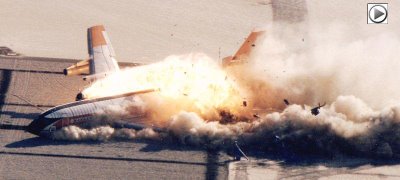 The Boeing 720 landed askew and caused a cabin fire when burning fuel was able to enter the fuselage. The fire and smoke took over an hour to extinguish. The impact was spectacular with a large fireball enveloping and burning the B-720 aircraft. The test was a major set-back, but for NASA, the data collected on crashworthiness was deemed successful and very important. No dummies survived, indeed! ;-)
The Boeing 720 landed askew and caused a cabin fire when burning fuel was able to enter the fuselage. The fire and smoke took over an hour to extinguish. The impact was spectacular with a large fireball enveloping and burning the B-720 aircraft. The test was a major set-back, but for NASA, the data collected on crashworthiness was deemed successful and very important. No dummies survived, indeed! ;-)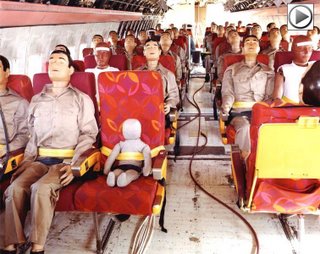 (To be continued...)
(To be continued...)
More info at Wikipedia: 1, 2, 3, 4, 5, 6 y 7
See also:
- Sky giants
- Skycranes
- Underwater explosions
- Ekranoplanes
- Aircraft carriers
Dryden Flight Research Center (NASA)
16 noviembre 2006
Escrito por Aberrón a las 1:21 | 0 comentarios »














